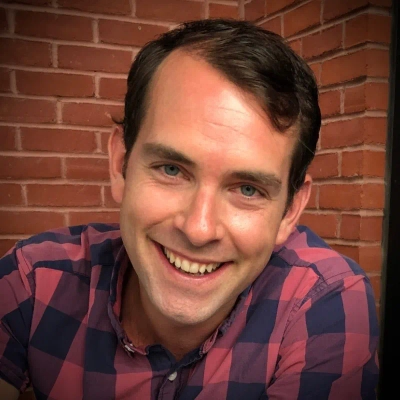15 Startup Success Stories: Cross-Team Collaboration Breakthroughs
Discover how startups are achieving breakthroughs through cross-team collaboration. This article presents real-world success stories that showcase innovative problem-solving and improved efficiency. Drawing on insights from industry experts, these examples demonstrate the power of diverse perspectives in driving business growth.
- Transforming Data Insights Through Cross-Team Collaboration
- On-Site Problem-Solving Leads to Faster Closings
- Reshaping Learning Experience with Diverse Expertise
- Customer Journey Workshops Bridge Engineering-Marketing Gap
- Alignment Meetings Foster Innovation in Healthcare Startup
- Leveraging Diverse Work Styles for Project Success
- Cross-Department Collaboration Enhances Marketing Tools
- SCRUM Principles Accelerate Informatics Product Development
- Developer’s Personal Need Sparks Game-Changing Feature
- Real-Time Lead Tracker Boosts Team Efficiency
- IT-Marketing Synergy Quadruples User Conversions
- Standardized Checklist Revolutionizes Property Assessments
- Property Councils Unite Teams for Improved Results
- Cross-Team Insight Unlocks Stalled Property Challenge
- Teacher’s Input Boosts Trial Conversions Significantly
Transforming Data Insights Through Cross-Team Collaboration
One of the first challenges we faced at Upside was improving the way we communicated data insights to our clients. Customers found our engineering team’s brilliant backend engine, which surfaced forensic-level attribution data, to be too abstract and overwhelming when marketing and sales attempted to position it. We were sophisticated and accurate, but not usable.
When we brought engineering, sales, and customer success together for a single working session with the common objective of “How do we make this dashboard something a VP of Sales would check daily?” that’s when the breakthrough occurred. Customer success provided context from live accounts, sales shared the problems they were hearing during discovery calls, and engineering described the technical limitations. We learned in that room that customers wanted clarity on the story behind what was driving their deals, not more data points. Adoption skyrocketed after we reorganized the product into “deal stories” instead of endless metrics.
This was made possible by two factors: first, establishing psychological safety so that engineers could challenge salespeople and vice versa; and second, presenting the issue as a common goal rather than a function-to-function struggle. I set up regular “deal labs” in which each department had to bring one actual customer scenario and go through it with the group. In addition to resolving the dashboard problem, that approach served as the cultural cornerstone for our current approach to product-market fit.
 Dan Ahmadi
Dan Ahmadi
Co-Founder, Upside (Forensic Revenue Intelligence for B2B Companies), Upside.tech
On-Site Problem-Solving Leads to Faster Closings
Early on at I Buy Michigan, we faced a challenge in streamlining the process to help sellers move quickly despite complicated property conditions. I gathered my acquisitions, repairs, and title partners for a walk-through–not just a meeting–and by seeing the property together, we hashed out a simple, step-by-step approach that worked for tough homes. Creating this shared, on-site problem-solving experience made it easier for everyone to offer honest feedback and surface practical solutions, which led to faster closings and happier clients.
 Preston Saenz
Preston Saenz
Owner, I Buy Michigan
Reshaping Learning Experience with Diverse Expertise
In the early days of building Edstellar, one of the biggest breakthroughs came when the product team and the training delivery experts collaborated closely to refine the learning experience. The product team had built a robust platform, but it was through the inputs of the trainers—who understood what actually engages learners—that the design was reshaped into something far more intuitive and impactful. What really made the difference was creating an environment where every voice was valued, regardless of function. Instead of keeping conversations in silos, regular cross-functional workshops were held where developers, trainers, and operations leads worked side by side, often whiteboarding solutions together. This not only solved immediate challenges but also fostered a culture where collaboration became second nature, ultimately accelerating growth and shaping the foundation of Edstellar’s high-impact training model.
 Arvind Rongala
Arvind Rongala
CEO, Edstellar
Customer Journey Workshops Bridge Engineering-Marketing Gap
Can you tell me about a time when you saw your early startup team working cross-functionally and achieving a great result? How did you foster this kind of partnership?
One of Branch’s earliest struggles was adoption outside of Silicon Valley. While our engineering friends loved the feature set of what we’d built, marketers – who were just as much the buyers of our product – would often struggle with not only the implementation of the features but also the language. We had a classic misalignment: marketing couldn’t get the positioning right because the product team believed they were shipping what the customer desperately needed.
Our invention of “customer journey workshops,” cross-functional meetings where we literally walked through a customer’s experience with Branch — from the first touchpoint to live implementation — was the game-changer. The company’s engineers would be able to listen to live recordings of sales calls when clients asked: “But what does this really do for me?” Engineers had to meet with marketing to explain why the way some features were built was the right way to build them. That created a new frame, and we started talking about it as “the invisible thread that connects your mobile growth” instead of “deep linking technology.” It was only a matter of how the product was complicated by marketing that the story was made up.
I had to schedule time for this kind of collaboration, which now may appear “unproductive” to some. Engineers initially pushed back, claiming they needed to code. But they became proponents of having the company do more of these sessions after seeing how their words resonated in customer conversations. We set up a monthly cross-team review of one customer’s journey, switching who was presenting and who was listening, so that it was a sustainable practice. In the end, we adopted this approach that helped build a common language across the teams and improve product-market fit.
 Mada Seghete
Mada Seghete
Co-Founder, CEO and Marketing, Upside.tech
Alignment Meetings Foster Innovation in Healthcare Startup
In our women’s wellness startup, we experienced a significant turning point when we implemented periodic alignment meetings that brought together our patient care, web development, and marketing teams. These cross-functional sessions created a space where team members could clearly understand their roles within the broader mission and identify opportunities for workflow improvements. By facilitating regular communication across departments, we were able to break down silos that typically exist in healthcare startups and establish a collaborative environment where innovations could flourish. The key to making this work was ensuring every team member felt heard and understood how their contribution connected to our overall patient-centered goals.
 Sarah Bonza
Sarah Bonza
Founder, Bonza Health
Leveraging Diverse Work Styles for Project Success
In our early startup days, we faced a significant breakthrough when resolving a conflict between two key team members with opposing work styles – one analytical and one creative. I facilitated a structured alignment session where both individuals could openly express their perspectives, which led to a clearer understanding of how their different approaches complemented our project goals. By realigning their responsibilities to match their natural strengths – data validation for our analytical colleague and customer-facing strategies for our creative team member – we not only resolved the tension but improved our project delivery speed by 30 percent. This experience reinforced my belief that effective cross-functional collaboration requires recognizing individual strengths and creating space for different perspectives to coexist productively.
 Yaniv Masjedi
Yaniv Masjedi
Chief Marketing Officer, Nextiva
Cross-Department Collaboration Enhances Marketing Tools
Because our services are used as marketing and analytics tools by small businesses, we encourage a lot of cross-collaboration between our own marketing team and our developers. We rely heavily on customer feedback for improvements as well, but marketers know what marketers need, and we try to get their input and use them as testers. Our usual approach here is to assign individuals from one department to sit in on meetings for the other, and use that as a basis for collaboration.
 Jonathan Palley
Jonathan Palley
CEO, QR Codes Unlimited
SCRUM Principles Accelerate Informatics Product Development
In our early informatics projects, implementing SCRUM principles created a breakthrough in how our cross-functional teams of data scientists and engineers collaborated. By instituting inclusive team meetings and developing a structured user story format, we significantly reduced revision cycles and ensured everyone understood the broader context of their work. This approach helped team members see beyond their specialized roles and contribute more meaningfully to our shared objectives, ultimately accelerating our product development timeline.
 Eugene Lebedev
Eugene Lebedev
Managing Director, Vidi Corp LTD
Developer’s Personal Need Sparks Game-Changing Feature
One of our biggest early breakthroughs at HubHive came from cross-functional collaboration between product vision and developer creativity. As CEO and Co-Founder, I also played the role of product owner and UI/UX designer, so most people expected me to shape the user journey. But one of our developers, who also has an entrepreneurial streak, was actively reselling products from pallets on Facebook Marketplace. He had a personal need to offer unique discounted pricing to close friends without undercutting his broader market.
When he started using HubHive to list his products, he suggested a feature where select groups could see special pricing. What began as his personal wish list turned into an entirely new idea we called Hive Deals. We quickly realized that other partners were just as excited, saying they had never seen a place where they could set unique prices available only to certain groups.
The key to making this collaboration work was listening deeply and giving equal weight to ideas from every role, not just leadership. Because he was both a developer and a real user of the app, his perspective carried practical insight that I might not have uncovered on my own. Hive Deals was born from that intersection of personal need, technical possibility, and company vision, and it became a differentiator we would never have built if we had stayed siloed.
 Caleb Kingston
Caleb Kingston
Co-Founder and CEO, HubHive
Real-Time Lead Tracker Boosts Team Efficiency
One standout moment was when my acquisitions team teamed up with our virtual assistants in the Philippines to speed up deal processing. Someone suggested we build a shared lead tracker that everyone could update in real time, which cut our missed opportunities in half almost overnight. I made it a point to schedule short, focused Zoom huddles each week so everyone could weigh in, share quick wins or bottlenecks, and feel their input mattered. Giving each team member ownership of a piece of the process made us all more invested in the outcome, and the results showed up fast in both our speed and team morale.
 Jasper Cool
Jasper Cool
Founder, Bright Home Offer
IT-Marketing Synergy Quadruples User Conversions
When our IT and marketing teams worked together to address a user acquisition problem, my early-stage business made a significant breakthrough. Although the IT team’s product was excellent, adoption was sluggish. By bringing the two teams together, developers rapidly prototyped products that directly addressed the customer pain points that marketers revealed. Conversions quadrupled as a result of the streamlined onboarding process created by our collaboration. I helped to nurture this cooperation by setting up collaborative brainstorming sessions, promoting candid communication, and ensuring shared accountability for results. This increased trust and created an environment where a range of expertise stimulated creativity.
 Dhari Alabdulhadi
Dhari Alabdulhadi
CTO and Founder, Ubuy Germany
Standardized Checklist Revolutionizes Property Assessments
My engineering mindset always seeks ways to improve systems, and early on, our deal flow was getting hindered by slow repair estimates. I gathered my acquisitions specialist and lead contractor in a room, and together we mapped out every potential repair, creating a standardized inspection checklist with pre-calculated costs for common issues. This methodical approach, inspired by my experience in the auto industry, allows us to generate a solid offer within minutes of completing a walkthrough. This has been a game-changer for sellers who need certainty quickly.
 Sergio Aguinaga
Sergio Aguinaga
Owner and Founder, Michigan Houses for Cash
Property Councils Unite Teams for Improved Results
Could you give an example of a time when your early startup team’s cross-functional cooperation produced a significant breakthrough? How did you encourage this kind of collaboration?
When our construction crew, design team, and operations staff collaborated to address a persistent issue—inconsistent guest reviews linked to property condition and presentation—we made one of our most significant breakthroughs. During the construction process, durability was the main consideration, and materials like paint, flooring, and cabinets were selected to withstand wear and tear. Meanwhile, the design team aimed for aesthetics that would highlight the property in pictures. Efficiency was important to operations because quicker turnovers resulted in higher occupancy. Each department was correct on its own, but when combined, they were causing conflict: projects took longer, expenses varied, and reviews didn’t improve.
When we took all three teams to tour an underperforming property, it was a game-changer. Rather than assigning blame, each group gave their interpretation of “what success looks like.” Operations described how delays in one step caused bottlenecks in other areas, design illustrated how minor aesthetic improvements affected booking rates, and construction explained how specific finishes could reduce long-term maintenance costs. That meeting resulted in a new standard package that we still use today: sturdy flooring combined with sleek cabinetry options and paint schemes. It was more than just a compromise; it was a strategy that increased profitability and guest satisfaction.
To facilitate this teamwork, creating organized opportunities where every voice had equal weight was more important than simply telling people to cooperate. I began setting up “property councils,” in which various teams were required to discuss upcoming projects and list potential risks as well as opportunities. It felt slow at first. However, the teams turned into process advocates after they realized that their input directly influenced results, such as a higher return on investment, fewer complaints, and easier turnovers.
 Mark Lumpkin
Mark Lumpkin
Sales Director in Renovation & Design, STR Cribs
Cross-Team Insight Unlocks Stalled Property Challenge
One of the biggest breakthroughs at Stillwater came when we brought together our marketing, acquisitions, and renovation teams to tackle a challenging inherited property that had stalled. By sitting down together and sharing insights from each perspective—why marketing wasn’t connecting, what sellers needed emotionally, and how we could structure a smoother renovation—we found a way to personalize our messaging and improve the process for the seller. I created space for open, judgment-free input, which helped each team feel heard and enabled us to move faster as a unit.
 Mac Sullivan
Mac Sullivan
Founder & President, Stillwater Properties
Teacher’s Input Boosts Trial Conversions Significantly
We experienced a high drop-off rate on our free trial page. The marketing, tech, and teaching teams met to address this issue. A teacher suggested that the page lacked a human touch, so we added a short welcome video featuring a native teacher. This single change boosted trial conversions by 30%. The solution was effective because everyone brought their expertise, and we stayed focused on one shared goal.
 Joaquin Calvo
Joaquin Calvo
Director, Comligo Spanish

